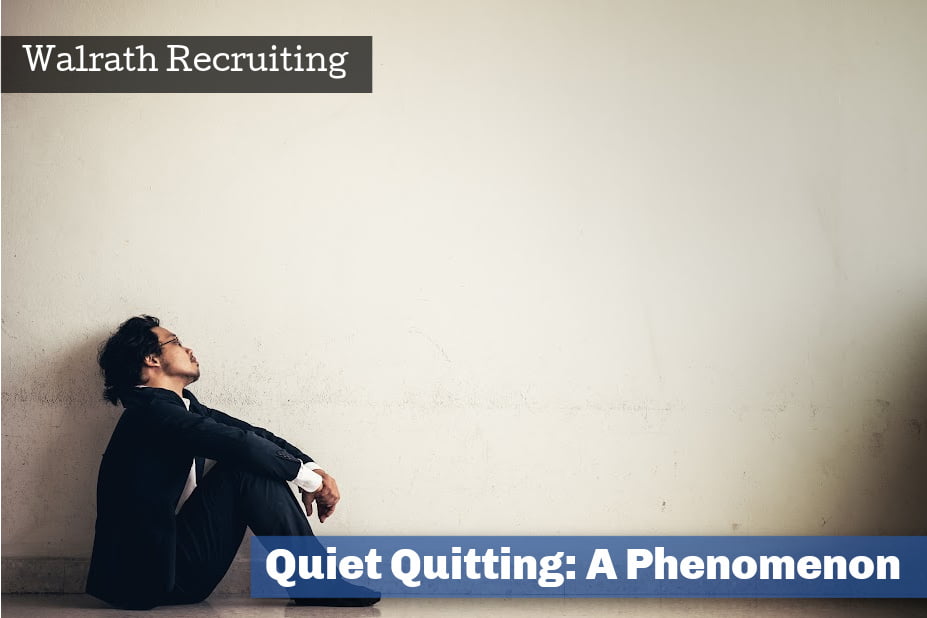U.S employee engagement took another step backward during the second quarter of 2022, with the proportion of actively disengaged workers increasing to 18%. The trend of, “quiet quitting,” has gone viral and adopted the attention of our employees. In fact, quiet quitters currently make up at least 50% of the U.S. workforce. To reattain the engagement of our employees it’s important to first recognize the signs and possible causes, then compose a plan of action toward a more productive future.
What Signs to Look For?
Surprisingly, quiet quitting doesn’t refer to the actual resignation of your employee. Rather, it’s defined as the practice of reducing the amount of effort one devotes to one’s job. A quiet quitter will not partake in hustle culture. They are simply doing what they need to get by and will not go above and beyond in their role. Growth is not on their radar. There are a few signs to keep an eye out for when a quiet quitter is on your team:
- Disengagement in meetings (both in person and virtual)
- Lack of enthusiasm
- Avoidance of team-building activities and small talk amongst fellow employees
- Decreasing in performance
Employees that are participating in quiet quitting will not seem involved in meetings, and that’s if they even attend. You won’t catch them asking questions or engaging with fellow employees. Their timeliness will slack regarding both completion of tasks and arrival to work. They’ll do what they can to skip out on team-building exercises such as lunches or outings and a lack of enthusiasm is likely to be present.
Why Is It Happening?
Quiet quitting is often based on a rejection of the pressure or expectation to “go above and beyond” in one’s role. With the majority of quiet quitters made up of Gen Z, the specific cause of the movement is controversial. While some believe it to be a generational downfall, others believe the movement will bring control back into the hands of the employee. The individuals practicing quiet quitting believe in doing their job as described, or, “acting their wage.”
It seems employee compensation, or lack thereof, is an impelling cause of this movement as employees do not feel they should be expected to perform a job that they are not being compensated for accordingly. With the effects of the Great Resignation still upon us, you may find this phenomenon to be more prevalent in companies where employees are expected to wear many hats. At one time it was thought to be a temporary fix for mass resignation, but it has become common practice amongst employers. Other possible causes are as follows:
- Lack of recognition
- Burnout due to excess workload
- Dissatisfaction with work
What Can Be Done?
If you’re noticing behaviors associated with quiet quitting amongst your employees, it may be a sign to step back and reevaluate your work environment. In an attempt to decelerate quiet quitting, employers must reengage their workforce and create a healthy and productive environment that acknowledges employees for their hard work. Here are a few things that can be done to prevent or reverse quiet quitting in your workplace:
- Promote work-life balance
- Clearly define employee expectations/job descriptions
- Notice burnout and create a plan to come back from it
- Offer a clear path for career growth
- Check-in on a regular basis
The act of quiet quitting does not come from an employee who is actively seeking alternate employment, and, in most cases, you can obtain re-engagement of your employee with a few simple steps. Noticing the signs and understanding the reason behind them will greatly increase your chances of stopping it before it’s too late.
For further assistance in your staffing and recruiting needs, please contact us at (518) 275-4816 or email jobs@walrathrecruiting.com.
LATEST READS FROM WALRATH RECRUITING:


Leave A Comment